A profile of the Syro-Malankara Catholic Archbishop of Trivandrum.
By, Sister Christian Molidor, R.S.M.
Benedict Mar Gregorios is a man who hurries in a heat of hope!
The Syro-Malankara Archbishop of Trivandrum is an elegant, thin man in perpetual motion. When introduced, he mocked his wispy beard by telling us that children often asked why he never cut it. He laughingly responded, “Would you trim a flower?”
Picture his residence in Trivandrum, Kerala, India – a wooden building with breeze-collecting porches surrounded by exotic plants and flowers, gardens bursting with crops (some unknown and untried throughout his country), rubber trees, animal shelters, chemical laboratories, distilleries for making honey syrup and wine, quail and chicken coops, hybrid-seed-processing areas, libraries and research rooms…picture this, and you will “see” just a small portion of his world.
Our first meeting with Mar Gregorios was at a luncheon. Msgr. Robert L. Stern, Sister Kathryn Callahan, C.S.C., Kamini Desai Sanghvi and I were served quail (grown on his farm), fresh pineapple (grown on his farm), cashew nuts (grown on his farm), honey spread on sweet bread (credit bees with the honey but the bread was home-baked), and coconut milk (you guessed it).
During the meal, Mar Gregorios quoted literature from half the writers of the Western world. He quoted Horace’s poetry in the original Latin. He is fluent in Malayalam and Tamil, the languages of his archdiocese. He also speaks fluent Italian, French, Portuguese and English.
He maintains correspondence with scientific societies and academic associations throughout the world; collects the latest research on plant life, agricultural techniques, fast-growing trees, mushrooms, small game; breeds dairy cows, anthurium flowers, cacti and roses, spices. You name it, this 76-year-old priest has studied and knows it.
He charmed our group with tales of his travels and exemplified the concept that cheerfulness is the most visible sign of wisdom. Most of all, he made us think.
Mar Gregorios is the major archbishop of the Syro-Malankara Catholic Church, a community that achieved full communion with the Church of Rome in 1930. Ordained a bishop in 1955, his efforts to renew the Syriac liturgy within a truly Indian context has led to the Church’s tremendous growth. Today more than 300,000 people are baptized members. When the archbishop was ordained in 1955, the Syro-Malankara Church numbered just over 70,000 members.
Mar Gregorios has initiated programs with the Tamils in the south, and with the dispossessed – the so-called “untouchables” – in his own state of Kerala.
We met the archbishop on several of his visits to New York and were certainly familiar with his projects funded by the benefactors of Catholic Near East Welfare Association. Now we were seeing him for the first time on his own turf.
We came to see what we might do. We left feeling he had done much for us.
This simple priest/erudite scholar insists, “Our Lord didn’t come to save souls alone, but to save people! We must realize that the God who gave us a body and who himself assumed a body, cannot be thought of as indifferent to our material needs, for he made us to live in human dignity – dignity that presupposes a certain material well-being.”
Mar Gregorios explained that many of his people do not possess that minimal material comfort; they live in painful circumstances, knowing only hunger and want. Eighty percent of the Indian population in India live on farms, as opposed to six percent in the U.S. Most of these farms are as small as a quarter of an acre.
Mar Gregorios stated that India “must experience an agrarian revolution to precede any industrial revolution; to do this, scientific farming must be done and many of the farms must be consolidated. And if the farmers are removed from the land,” he continued, “there must be a place for them in society, there must be homes and jobs waiting for them. Even more vexing is the problem of raising the education level of millions of people to make such a revolution possible.”
Such a revolution is already in progress – conceived, developed and nourished by this Renaissance man of Trivandrum.
Farming is a poor profession in Trivandrum. A farmer gets 10 percent of his profits, the rest is absorbed by costs. This is why the archbishop works so diligently on farming and farm products.
Small demonstration farms, attached to local parishes, have been set up in several areas. Some of these land parcels are funded by donors of Catholic Near East.
These small plots of land cover about three acres. Rubber trees are grown to help fund the food crops. The newest techniques are employed, and the people can see, and eat, the results for themselves. Thus, methods of agriculture that were previously suspect can be introduced and win popular acceptance through the teaching and the example of the church.
Mar Gregorios has also encouraged the establishment of poultry farms and backyard chicken coops to supplement the protein-poor diet of many of the people who now eat rice three times a day.
A new hybrid grass for cattle has also been developed. It grows rapidly in the Indian climate and can be cut frequently. The villagers are then encouraged to collect seeds for planting on their own farms.
Fast-growing tree seedlings are given to farmers and proper planting techniques explained at evening sessions to the men and women attending the classes. Mushrooms, a cash crop as are cashew nuts, are cultivated in specially constructed rooms and processed in the places they are grown, saving shipping costs.
Perhaps the buildings and research laboratories are crude by Western standards (the air-conditioning in one chemical plant was a low rack that held heavy cotton toweling periodically soaked with water. The evaporation caused cooling for the entire room) but the old cliche held true: “It works!”
Mar Gregorios has never been swayed by the “small is beautiful” economic philosophy. Early on he recognized that a healthy economy and society needed both the large and the small. Indeed, the two are mutually interdependent.
“Look at the abundance of raw rubber in Kerala…yet the processing and all the products are made elsewhere…so are the profits.” Catholic Near East recently funded a processing plant to keep profits in Trivandrum Archdiocese.
The typical cottage industry was not sufficient, so he built factories where men and women can be employed in greater numbers. The garment factory in Nalanchira, for example, is relatively large, and employees design and produce small articles of clothing and accessories. On the day of our visit, a shopping bag (designed as a promotional piece for a department store in Germany) was sewn and then screen-printed in three colors.
Fabrics are hand-blocked, but on an assembly line workbench where designs can be stamped on a full bolt of cloth by several people, rather than piece by piece. It has two outstanding features: the factory and its products create no pollution, and women with a limited education can be employed without danger to their health and safety.
Mar Gregorios sighed, “Kerala is a rich country with poor people.” But I observed a sparkle in the people. Every day they are seeking new ways to survive; they have no time for littleness; they are proud of who they are. The Malayalis feel they are the true Indians, never conquered or put into submission by outsiders. And this shows in their faces, in their actions.
“Education is the problem of poverty in India, and one which the church must address if she is to help her people live in decency, and if her protestations of love for all people are to remain credible.”
Catholic Near East has long been involved in this critical field of education. Catholic schools and colleges in India have achieved a reputation for providing a thorough education while respecting the freedom of conscience of their students.
It is this reservoir of respect and good will that enables Mar Gregorios, religious men and women, and the laity, to demonstrate their love and concern for the people – the power of Christian charity in action, not just words.
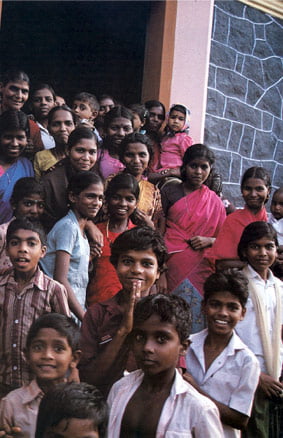
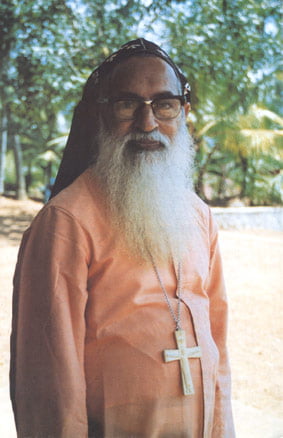

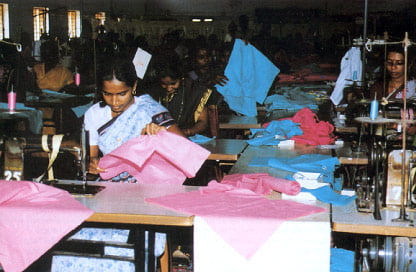

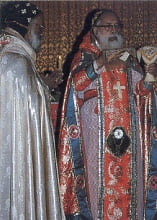
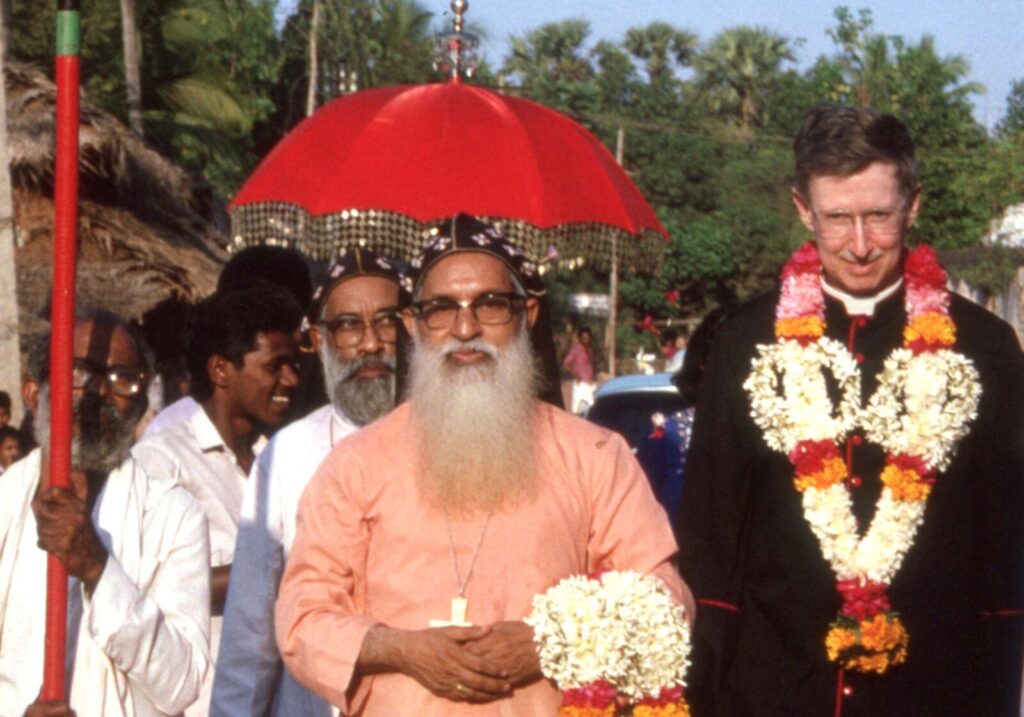
Edit: Sister Christian Molidor, R.S.M., a professional photographer and former programs director at CNEWA, served the agency for nearly 30 years. She entered into eternal life in 2013.
Republished In honor of ONE magazine’s 50th-anniversary year, the Catholic Near East Welfare Association blog series, ONE @ 50: From the Vault, aims to revive and explore the wealth of articles published in ONE magazine throughout its history. A standout amid dozens of profiles, this feature, originally published in April 1992, highlights Benedict Mar Gregorios and the wealth of knowledge and wisdom he shared.

